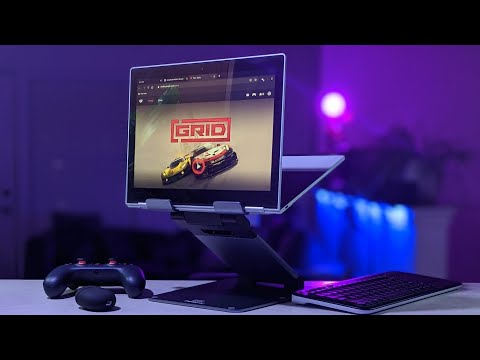
If you have a laptop, you know the feeling of getting it out of your bag and looking at the screen while you are on the train or bus. It feels like a very long time has passed since when you put yourself away and then stood up to start using your computer.
You see everything that’s on your screen as if it’s a movie that was made for just this moment—and then it happens: Your hard drive crashes! The scary part is that so many laptops use magnetic drives that are susceptible to damage from improperly using their stands.
If you’re wondering whether or not laptop stands can cause damage to hard drive data within your laptop, read on!
What Happens When You Store a Laptop Vertically?
If you want to keep your laptop safe and secure, then it’s important to know how to store it properly. One thing that many people don’t realize is that storing a laptop with its screen closed can lead to damage over time. This happens because there is no mechanical force (such as spinning) on the hard drive while it is stored in this way.
However, if your laptop is open and you are using it in a vertical position, then the hard drive may be active at all times since there are numerous moving parts inside its casing which could cause issues over time if not cared for properly by users who store their laptops vertically instead of horizontally like most other people.
Using Laptop Vertically
When you store a laptop with its screen closed, the hard drive is not spinning. Therefore, there shouldn’t be any issues with storing it this way because there is no mechanical force that could damage it. However, if your laptop is open and you are using it in a vertical position, then the hard drive may be active.
In this case, you should probably remove the AC power from your laptop (i.e., use battery power) instead of keeping it plugged in. The reason for this is that whenever the HDD is working, there is a risk of damage due to vibration.
Since the HDD must spin at high speeds to retrieve data from a storage medium located at its center (in most laptops), it is vulnerable to external forces. When a hard disk drive spins up, there will always be some wobbling (or vibration) caused by slight imbalances in its mechanical construction.
The faster the drive rotates, the greater the wobbling will be. If your computer happens to be sitting on an uneven surface while it is running or if you are typing on the keyboard with excessive force, then these kinds of vibrations can transmit through your desk and cause damage over time.
The best way to avoid any potential damage is simply by using proper care whenever you use your laptop: keep it upright while reading/writing documents; don’t let it fall back onto its face; don’t place heavy objects on top of them either!
The laptop needs to ventilate to stay cool.
The best way to do this is by storing your laptop horizontally. This will allow the air to flow underneath, which will help keep it cool. If you store it vertically, it’s not going to be able to ventilate properly because there isn’t enough room for airflow underneath the computer case itself.
Also note that if you’re storing your computer vertically (like on top of another object), then you must also make sure there are no obstructions between where your laptop sits and where any other items may touch its surface (such as bookshelves).
Some laptops can be positioned in different ways.
Some laptops can be positioned in different ways. This is especially true of older laptops with a hinge on the side, like the HP Pavilion and Sony Vaio series. The monitor may hang out over the keyboard, which can cause damage to your hard drive if you don’t use a stand that keeps it safely upright.
If you’re planning on using your laptop on its legs or even just resting it on an armrest, be careful not to place it directly under any heavy objects like bookshelves or TVs—you don’t want anything weighing down on your precious hardware!
Why the laptop needs ventilation

You’re probably wondering why you need to provide additional ventilation for your laptop. After all, it has an air-conditioning system installed in it. The reason is simple: laptops are designed to be used on their sides or upside down. As such, they have an open ventilation area that allows hot air to escape while providing fresh air inside the case when needed. If this doesn’t happen often enough, then there could be some serious problems with overheating or even damage to components like hard drives and memory sticks which can cause irreversible damage if left unchecked for too long!
The real risk when storing a laptop vertically
The real risk when storing a laptop vertically is that the hard drive may become damaged.
Laptops are not designed to be stored vertically, so you should always keep them on their sides or backs. This helps protect the internal components from dust and other damage like scratches that can occur from being bumped into while in storage.
What Causes Hard Drive Damage in A Laptop

Hard drive damage is a common problem in laptops. The reason for this is that there are many moving parts inside your laptop, which can cause the hard drive to malfunction or even shatter if it’s dropped or otherwise exposed to too much pressure.
There are some things you can do to avoid hard drive damage:
- Don’t use your laptop on bumpy surfaces like carpets and wooden floors. If you have carpeting in your home, consider covering it with an anti-static pad or rug protector before setting up your laptop on top of it. You should also avoid using a rubber mat under your desk or table because they can cause friction between the moving parts within your computer chassis (like the fan) and cause wear on these components over time–which leads us back to our original point about how important having good ventilation when working with electronics is!
How Can You Avoid Hard Drive Damage
- Avoid dropping your laptop.
- Don’t leave it in direct sunlight or in a hot car, as this can damage the hard drive.
- Don’t leave it in humid environments like bathrooms and airplanes; they’re especially bad for laptops because their internal components are water-sensitive. If you have to take your laptop out at all, try not to do so near windows with lots of air moving through them (like an airplane).
- Don’t keep a laptop on top of furniture or other items that could tip over onto its screen—that is why most laptops have special covers for this reason!
Make sure to consider these points when choosing a laptop stand.
When choosing laptop stands, consider these points:
- How often will you be using it? If you’re looking for something that will stay put on your desk and never need to be moved, then a laptop stand with legs might not be right for you. On the other hand, if moving around is part of your daily routine and requires some mobility to get things done more efficiently (e.g., working at home), then having no additional time spent lifting or carrying around heavy laptops can become problematic over time—especially if they weigh more than 20 pounds each!
- Where will you use it? Some stands are designed specifically for specific places like bedrooms or offices; others can easily be used anywhere there’s space available—even outdoors! Make sure whatever kind of stand meets all requirements before buying so there aren’t any surprises later down the road!
Nulaxy: The Best Laptop Stand in The Market
The best laptop stand in the market is Nulaxy. It’s an extremely versatile stand, so you can use it for multiple purposes. This stand offers an adjustable height and angle, while also being lightweight and portable.
It comes with a premium aluminum alloy case which makes it durable and long-lasting. The design is simple but attractive, which makes it perfect for home or office use.
Conclusion
Laptop stands come in all shapes and sizes, but they generally have one thing in common: they all provide a stable base for your computer on which you can place your laptop or other devices such as speakers, keyboards, mice, and even monitors.
The main reason why people choose to use a laptop stand is that it allows them to have their computer at eye level while they are working on it. This means that they will not have to bend over every time they need to do something on their computer because now they will be able to see what they are doing without having to move their neck too much.





